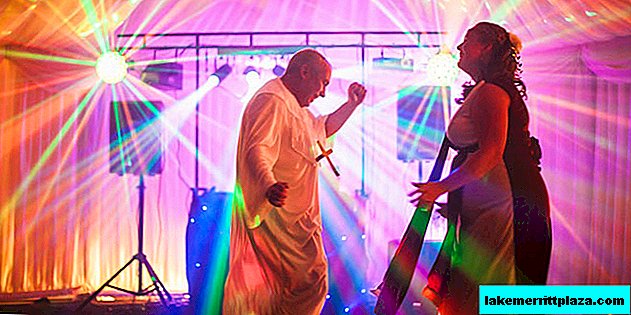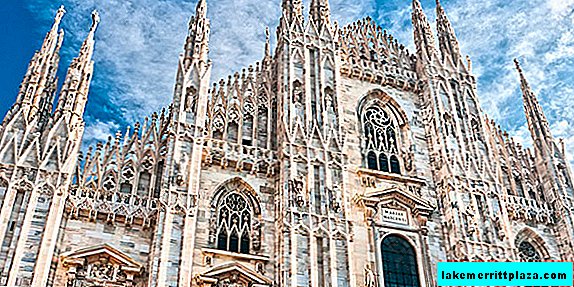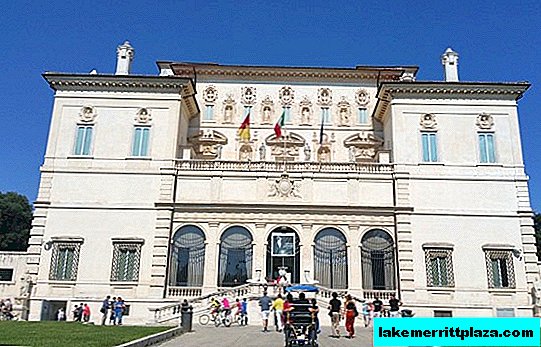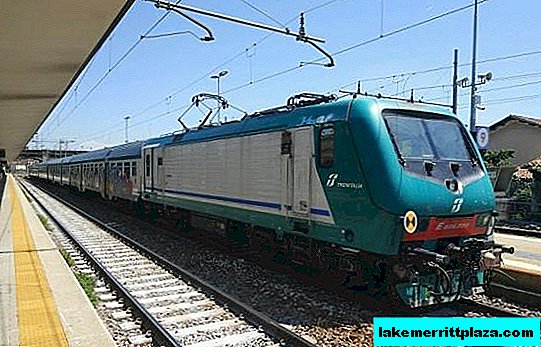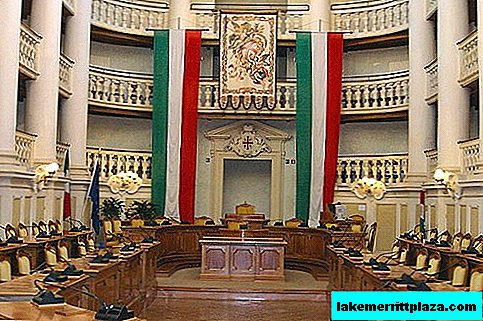Every year, over five million people visit the Vatican Museums - the papal treasury, known for its amazing collection of works of art. Without exaggeration, the temples, galleries and palaces that make up the architectural ensemble of the Latin city-state and their priceless interiors are also a work of art. A considerable part of the masterpieces presented at the exposition was created to decorate the vast papal residence directly within the walls of the Vatican.
BlogoItaliano has already published articles on its pages. Vatican Museums and their pearl - the Sistine Chapel, painted by the great Michelangelo. However, considering them as a single complex, we never tried to highlight places that are worth visiting in the first place.
A detailed account of all the papal museums - and there are 29 of them - would be too long, and not all of them are available as part of a regular excursion. A dizzying 7-kilometer route through the halls, galleries and courtyards and courtyards will easily confuse the visitor. That is why, in order to save your time, BlogoItaliano decided to present its version of the TOP 5 Vatican Museums, without which the impression of visiting a city-state would be incomplete.

In October 1932, the opening of a new Pinakothek building took place.
Of course, the Sistine Chapel deserves special attention, but we will devote a separate article to it.
Important: Museums are incredibly popular among tourists all year round, and without buying tickets in advance, you can lose 3-4 hours in line at the box office. Details about buying tickets to the Vatican Museums BlogoItaliano wrote here. Tickets themselves can be purchased online on this site.
5. Vatican Museums: Borgia Apartments
In 1492, Pope Alexander VI Borgia ordered the premises in the palace of Nicholas V. to be converted into private apartments. One of the best masters of the late 15th century worked on the painting of the walls of the renovated rooms. - Pinturicchio.
Unfortunately, these walls have witnessed more than one crime, and after the death of Alexander VI, his apartments were empty for 3 centuries. In 1816, by order of Pope Pius VII, 73 paintings were originally placed in the apartments, returned to the Vatican Museums after the fall of Napoleon. At the end of the XIX century. the papal chambers were restored.
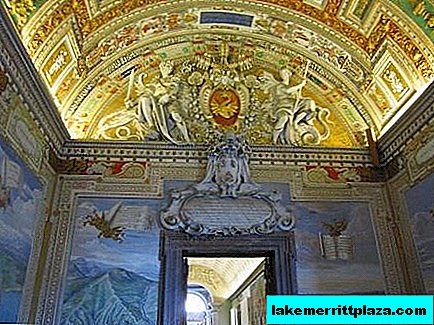
Pinturicchio worked on the wall painting of the apartments
Each of the 6 halls of this Vatican Museum bears its name in accordance with the plots of murals. The Sibyl Hall is 12 lunettes with colorful images of the Sibyls, ancient prophets and 8 allegorical astrological paintings. Within its walls found the death of Alfonso of Aragon - the first husband of Lucretia Borgia, killed by her brother Cesare.
Pinturicchio himself worked on the painting of the hall of the saints, almost without the help of his disciples. On the ceiling of this room is a fresco on an Egyptian theme (Isis, Osiris and Apis bull), which was quite unusual for the Renaissance. An enfilade of halls leads to the Pap hall, where ceremonies were held.
4. Vatican Museums: Gregorian Etruscan Museum
One of the most extensive Vatican Museumsoccupying 22 halls in the palace of Innocent VIII, decorated with frescoes by prominent 16th-century mannerist artists: Barocci, Zucari, Santi di Tito.
Its exposition presents monuments of ancient art of the IX-I centuries. BC. The museum was founded in 1837 by order of Pope Gregory VII after ancient settlements were discovered in Central Italy (the so-called South Etruria), which provided rich archaeological material. A significant part of the artifacts was found during excavations of the necropolis of the 7th century. BC. at the village of Chetterteri near Rome.
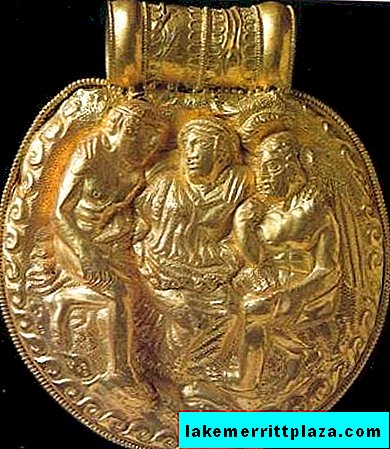
A collection of gold and silver products is the pride of the Etruscan museum
The pride of the museum is Etruscan gold, silver and bronze ware, a bronze statue of Mars from Todi IV century. BC, terracotta decorations of the pediments of ancient necropolises, the sculpture "The Dying Adonis" (II-I centuries BC), tombstones and statues of the IX-II centuries. BC. The collection also contains a large collection of ancient Greek and Roman statues and ceramics.
3. Vatican Museums: Pio Clementino
Continue acquaintance with the ancient monuments of art, which are rich Vatican Museums, can be in the Pio Clementino Museum, located in the Belvedere Palace. Its name is made up of the names of the founding popes - Clement XIV and Pius VI (70-90s of the XVIII century).
The decision to open it was not accidental: the Vatican antiquarian could no longer accommodate a huge collection of antiquities collected by popes over several centuries. Antiquary has undergone significant reconstruction, during which the Belvedere has acquired new outbuildings.
The square courtyard, where antique statues were located under Pope Julia II, was designed by architect Michelangelo Simonetti into an octagonal (octagonal). Later, in 1803, separate niches were built in the 4 corners of the courtyard for the marble group Laocoon and His Sons (I century AD), Perseus by Canova (in return for the antiquity lost during the Napoleonic Wars), Apollo Belvedere II c., Roman copy of Hermes (Antinous of Belvedere) Praxiteles.
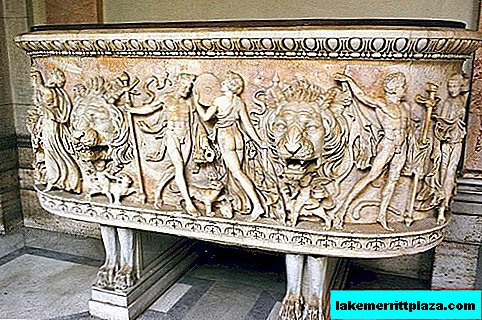
Pio Clementino Museum, antique sarcophagus
Halls of the museum: Greek cross, animals, Rotunda, Muses, galleries of statues and busts, mask rooms and Apoximenes.
The Pio Clementino Museum’s Animal Hall has a unique collection of marble and alabaster statues and images of real and mythical animals. In the gallery of Statues, the walls of which are still in the XV century. Pinturicchio and Mantegna painted, you can see Roman copies of the statues of Apollo Saurokton, Sleeping Ariadne, Narcissus, Drunken Satyr, Sitting Paris, bas-reliefs of Mars, Minerva, Venus.
In 18 niches of the Rotunda hall designed by Simonetti, sculptural images of gods and heroes are exhibited, including the statue of Hercules - the only statue found in gilded bronze.
2. Vatican Museums: Rafael Stanzas
Three magnificent rooms (stanzas) located in the palace of Nicholas V a floor above the Borgia apartments are the private chambers of Pope Julius II, who, in fact, founded the Vatican Museums.
The rooms are relatively small - 8 × 10 m, the Constanza’s main hall adjoining them, which was painted by Raphael’s students - 10 × 15 m, is also small. The courtroom - the station della Senyatura - in 1508-10. was decorated with allegorical images of Theology (Disputation), Philosophy (the famous "Athenian School"), Poetry ("Parnassus") and Law ("Justice"). The frescoes on seemingly battered subjects are filled with imaginative richness and at the same time impeccable harmony.
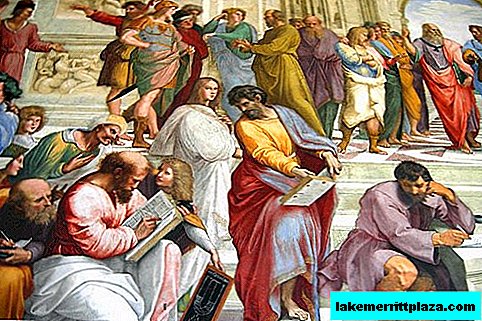
Fragment of the fresco "Athenian school" by Raphael
Rafael worked on frescoes on subjects about a righteous and unrighteous court in the small reception hall - the station d'Eliodoro - in 1511-14. “The Fire at Borgo”, “The Battle of Ostia”, “The Coronation of Charlemagne”, “The Oath of Leo III” - these murals were created by Raphael’s students according to his sketches in the Stanza del Incendio (1514-1517), where meetings were held under Pope Julia II church tribunal, and later, when Pope Leo X - a meal for the elite.
1. Vatican Museums: Vatican Pinacoteca
Fine art treasures that were returned to Vatican Museums in 1816, originally stored in the apartments of Borgia, after - they were constantly transferred from one palace to another. At the beginning of the XX century. the papal collection was replenished with a rich collection of Byzantine art, after which it was decided to build a new wing of the Belvedere, where the pinakothek was located.

In the Pinakothek, masterpieces of European painting of the 11th-19th centuries are collected.
Masterpieces of European painting XI-XIX centuries. presented in its 18 rooms in strict chronological order. Listing canvases does not make much sense, just name the names of the artists. These are Giotto, Fra Angelico, Filippo Lippi, Perugino, Lucas Cranach the Elder, Titian, Leonardo da Vinci, Veronese, Vasari, Poussin, Caravaggio, Bernini, Ribera, Murillo. Separate room - Raphael room.
Other popular articles:
- Sistine Chapel and Vatican Museums: Things to Know
- The most interesting excursions in the Vatican
- Tickets to the Vatican: how to buy and visit all the most interesting
- 3 Star Hotels in the Center of Rome
- St. Peter's Basilica: must see in Rome
Photos by: Bart Hanlon, mjgibson, Julianna Lees, Patrick, xiquinhosilva, Jim Forest.

